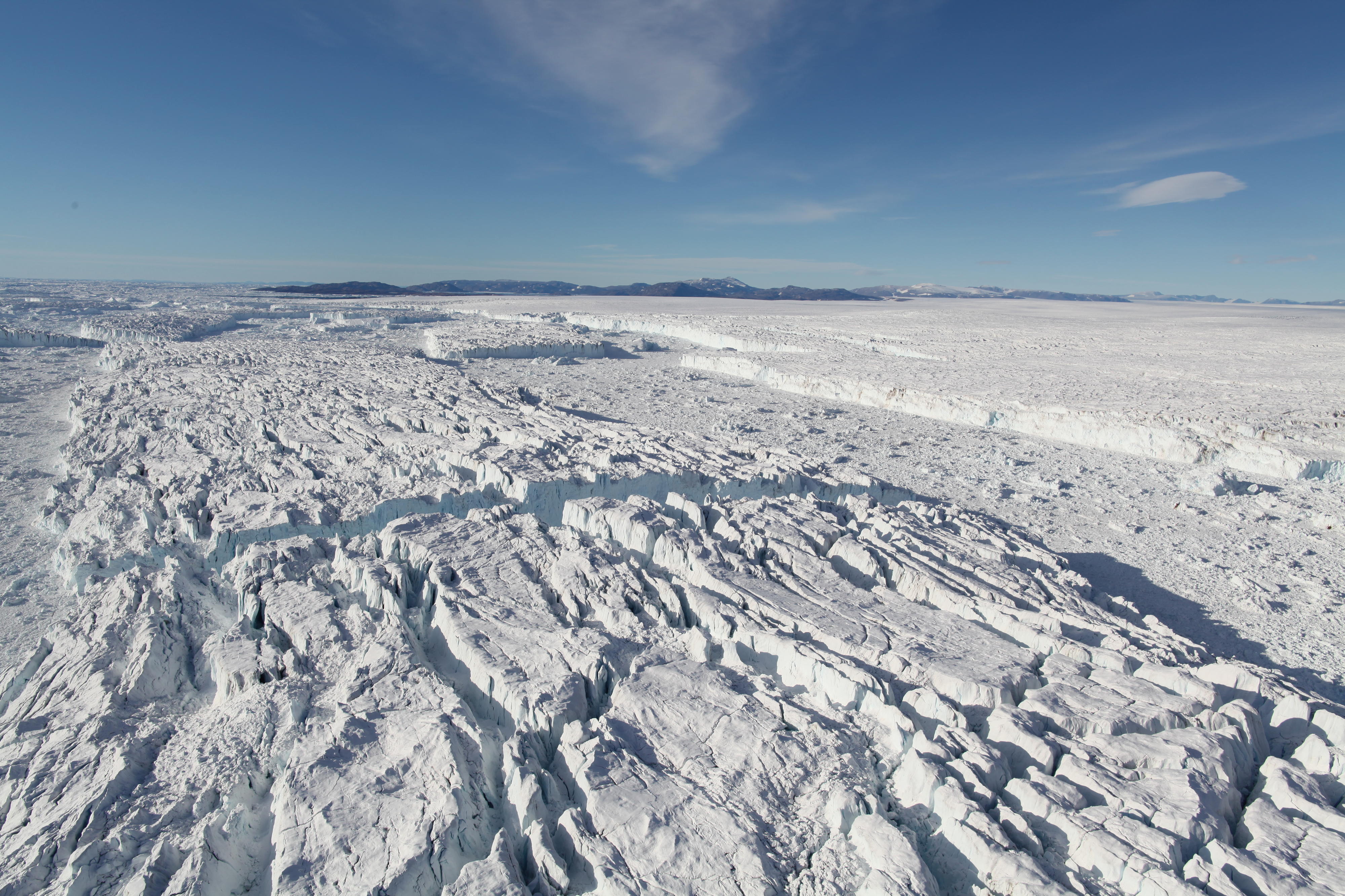News release
From:
Climate change: Widespread weakening of Northern Greenland’s remaining ice shelves *IMAGE*
Giant icebergs detaching from the front of Zachariæ Isstrøm, whose floating ice tongue collapsed in 2003. The ice discharge into the ocean from this glacier has dramatically increased since then. Photo credit: Anders Bjørk, August 2016
Download: High resolution (1.6 MB)
The Northern Greenland ice shelves are rapidly retreating and have lost more than 30% of their total volume since 1978, according to a Nature Communications paper. These ice shelves have long been considered stable, but 3 have already collapsed completely since the 2000s. Of the five that remain, ice shelf mass losses are destabilizing nearby glaciers that will continue to retreat as the ocean warms, with severe consequences for sea level rise, the authors suggest.
Loss of ice from the Greenland ice sheet has contributed 17.3% of the observed sea level rise between 2006–2018. The last remaining floating Greenland ice shelves are located at the northern edge of the ice sheet and help stabilize it by regulating the flow of ice that is discharged into the ocean. Greenland’s northern glaciers have only started to destabilize in the last 20 years, meaning more ice has been lost than gained, owing to weakening and collapses of some floating extensions of the glaciers. To better predict their contribution to sea level rise, it is important to define the timing and drivers of changes for the remaining ice shelves, as well as glacier responses. However, a comprehensive overview of the evolution of these ice shelves and the complex processes that are affecting them has not been produced.
Romain Millan and colleagues used thousands of satellite images along with climate modelling to analyze glacier-climate-ocean interactions in Northern Greenland. They observed a substantial and widespread increase in ice shelf mass losses. Since 2000, they found that the shelves are primarily losing ice at the bottom due to ocean warming. Additionally, the authors found that the glaciers have retreated and ice discharge in the ocean has increased, coinciding with ice shelf losses.
The findings suggest that, under future projections of ocean thermal forcing, basal melting rates will continue to rise or remain at a high level, which may have consequences for the stability of Greenlandic glaciers. If the ice shelves collapse completely, Greenland’s northern glaciers could dramatically increase the contribution of the ice sheet to sea level rise, the authors suggest.
Multimedia




 International
International



